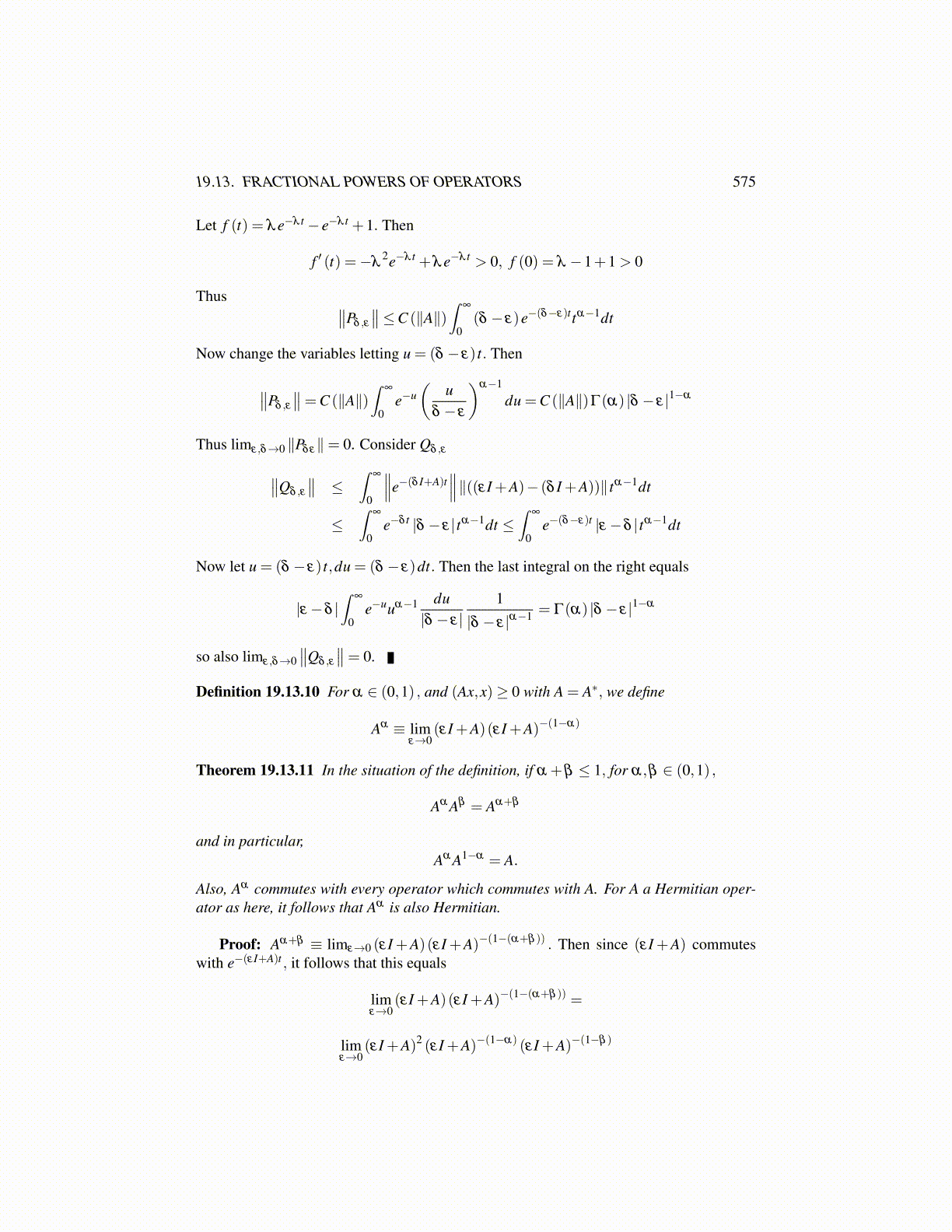
19.13. FRACTIONAL POWERS OF OPERATORS 575
Let f (t) = λe−λ t − e−λ t +1. Then
f ′ (t) =−λ2e−λ t +λe−λ t > 0, f (0) = λ −1+1 > 0
Thus ∥∥Pδ ,ε
∥∥≤C (∥A∥)∫
∞
0(δ − ε)e−(δ−ε)ttα−1dt
Now change the variables letting u = (δ − ε) t. Then
∥∥Pδ ,ε
∥∥=C (∥A∥)∫
∞
0e−u(
uδ − ε
)α−1
du =C (∥A∥)Γ(α) |δ − ε|1−α
Thus limε,δ→0 ∥Pδε∥= 0. Consider Qδ ,ε∥∥Qδ ,ε
∥∥ ≤∫
∞
0
∥∥∥e−(δ I+A)t∥∥∥∥((εI +A)− (δ I +A))∥ tα−1dt
≤∫
∞
0e−δ t |δ − ε| tα−1dt ≤
∫∞
0e−(δ−ε)t |ε−δ | tα−1dt
Now let u = (δ − ε) t,du = (δ − ε)dt. Then the last integral on the right equals
|ε−δ |∫
∞
0e−uuα−1 du
|δ − ε|1
|δ − ε|α−1 = Γ(α) |δ − ε|1−α
so also limε,δ→0∥∥Qδ ,ε
∥∥= 0.
Definition 19.13.10 For α ∈ (0,1) , and (Ax,x)≥ 0 with A = A∗, we define
Aα ≡ limε→0
(εI +A)(εI +A)−(1−α)
Theorem 19.13.11 In the situation of the definition, if α +β ≤ 1, for α,β ∈ (0,1) ,
Aα Aβ = Aα+β
and in particular,Aα A1−α = A.
Also, Aα commutes with every operator which commutes with A. For A a Hermitian oper-ator as here, it follows that Aα is also Hermitian.
Proof: Aα+β ≡ limε→0 (εI +A)(εI +A)−(1−(α+β )) . Then since (εI +A) commuteswith e−(εI+A)t , it follows that this equals
limε→0
(εI +A)(εI +A)−(1−(α+β )) =
limε→0
(εI +A)2 (εI +A)−(1−α) (εI +A)−(1−β )